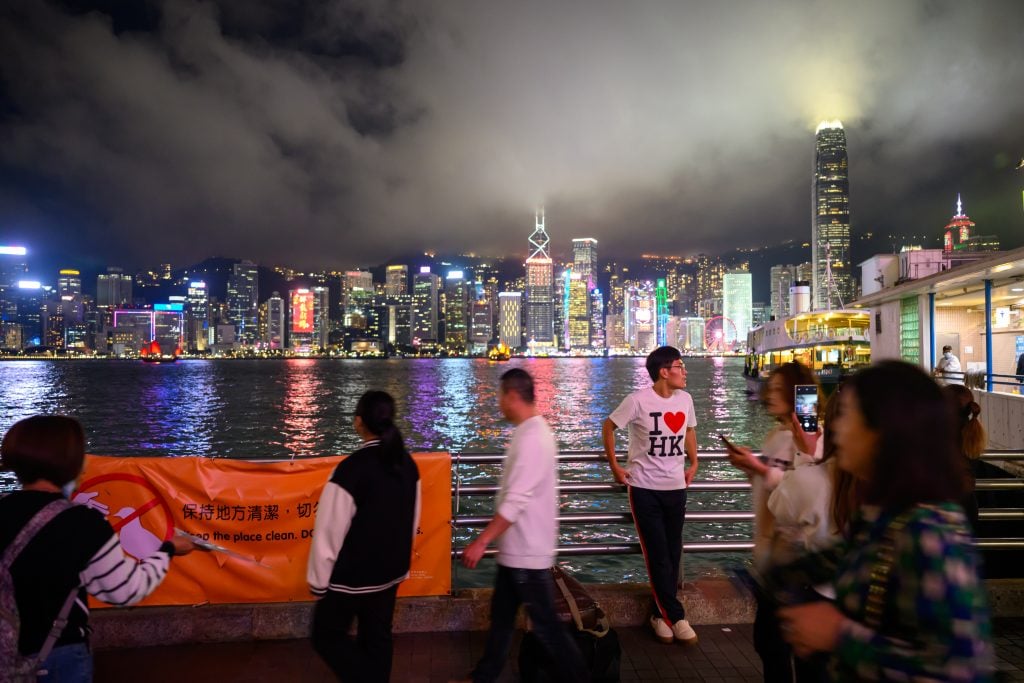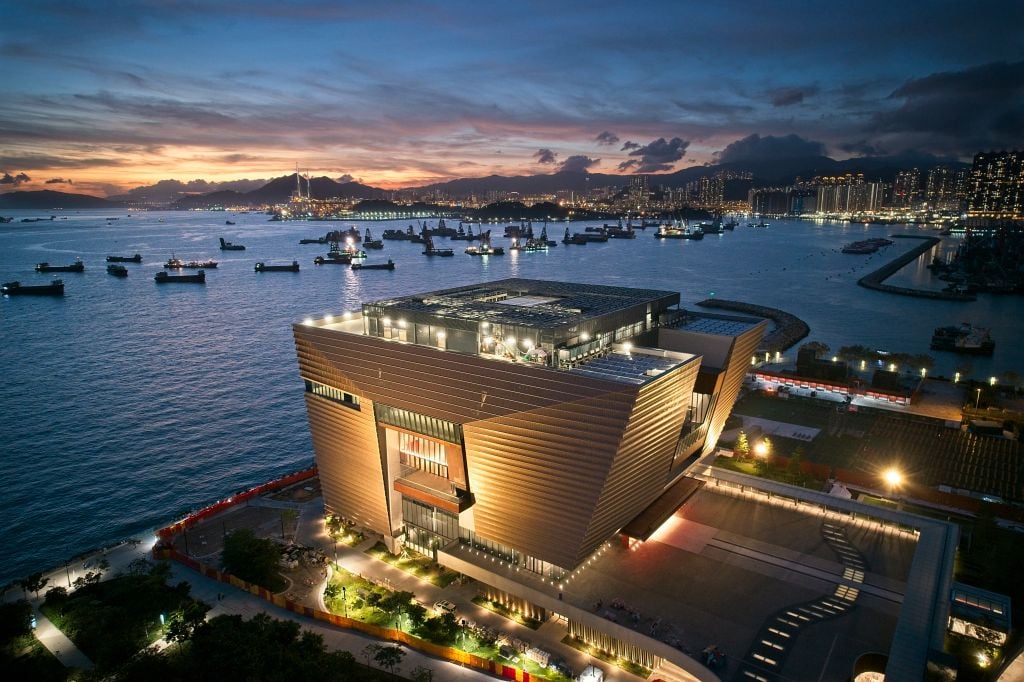Market
Art Basel Hong Kong Arrives Amid Economic and Political Uncertainties
A recap of the context of Hong Kong ahead of Art Basel's return this week.

A recap of the context of Hong Kong ahead of Art Basel's return this week.

Vivienne Chow

This article originally ran in The Asia Pivot, Artnet Pro’s biweekly members-only newsletter providing mission-critical analysis, insights, and exclusive intelligence on developments in Asia’s art markets, with a focus on business opportunities and challenges. Subscribe here to receive it directly to your inbox.
The press has not been on Hong Kong’s side ahead of the return of Art Basel next week. The Western media has been hammering on the city’s political situation amid the looming legislation of another national security law under Article 23 of the Basic Law, the city’s mini constitution. The law was speedily passed by a unanimous vote on Tuesday (March 19). Headlines about Hong Kong’s economic decline and closure of shops and restaurants have been a recurring feature of both local and international media outlets. Singapore’s Lianhe Zaobao, the largest Chinese-language newspaper in the city-state that has been Hong Kong’s main rival for decades, slammed the city’s deteriorating service industry, even calling it “the city that chases away customers.”
Nevertheless, Hong Kong’s authorities are doing the best they can to dress things up while actively defending themselves against Western media’s allegations. Amid “Art March,” which sees numerous major arts and cultural events taking place this month—including Art Basel, Art Central, the Hong Kong International Film Festival, and the Hong Kong Arts Festival—the local government is treating citizens and visitors alike to free ice cream and free tram and Star Ferry rides, local media reported.
On offer on the art front is “Continuous,” a large-scale outdoor installation exhibition by the Japanese collective teamLab. Mounted at Tamar Park in Admiralty and Central and Western District Promenade (Central Section), it features 200 illuminated ovoids that change light tone in response to touch and movements. Presented by the government and shown alongside works by homegrown talents, it is part of the elaborate outdoor free-to-public art project “Art@Harbour 2024” on both sides of Victoria Harbour, which also features works by other art world favorites such as Alicja Kwade.
There’s no such thing as a free lunch, however, and taxpayers are expected to foot part of the bill eventually, as some of these events are backed by the government’s Mega Arts and Cultural Events Fund. The exhibition featuring teamLab’s installation costs HK$50 million ($6.4 million), Hong Kong lawmaker Doreen Kong pointed out. The fund also backs Art Basel and Art Central this year. Whether these initiatives are appealing to deep-pocketed and well-traveled collectors is yet to be seen.

The Hong Kong Palace Museum in the West Kowloon Cultural District. Photo by VCG/VCG via Getty Images
Meanwhile, and more substantially, West Kowloon Cultural District, the city’s mega arts hub where M+ and the Hong Kong Palace Museum are located, is facing immense financial challenges. Henry Tang, chair of the authority that runs the arts hub, told local media at the beginning of this month that the district’s cash resources will run out in the middle of next year. He rejected the idea of declaring bankruptcy in an interview with Sing Tao Daily News, insisting a plan will need to be finalized by June or the district won’t be able to sign on exhibitions and art projects with prospective partners.
Last week, Tang said the arts hub has been cutting costs and considering raising rental fees and ticket prices, as well as selling a small portion of the site’s 40 hectares of land to raise funds. But none of these financial measures have been finalized. The news concerning the district’s books was also widely circulated in mainland China via WeChat.
The development of West Kowloon Cultural District has a long and complicated history that began at the turn of the century. When the plan was eventually finalized, the arts hub received an upfront endowment of public funds of HK$21.6 billion ($2.7 billion) in 2008, widely considered one of the world’s most ambitious and well-funded public art projects at the time. Over the years, however, delays in construction, cost surges, and Covid-19 became a burden on its finances. Of the handsome amount of public funding, 86 percent was earmarked for the site’s hardware, according to West Kowloon’s website, and just eight percent was allocated for museum collections and six percent for project management and master planning.
Against this cash-strapped backdrop, the arts hub is hosting the Hong Kong International Cultural Summit 2024 from March 24 to 26, coinciding with Art Basel Hong Kong. The district’s authority will also be signing 21 memoranda of understanding (MOU) with more than 20 institutions from around the world, including Madrid’s Prado and the Victoria and Albert Museum in London during the summit.
It’s too early to tell whether these MOUs will materialize into projects. But as Hong Kong projects a major fiscal deficit that is expected to eat up the city’s financial reserves, how the city will maintain its operation of its mega arts hub is a matter of concern not just for local citizens but also international players. The city may be celebrating Art Basel’s return to its pre-Covid scale and an eventful art week, but the undercurrent of uncertainties is too hard to ignore.